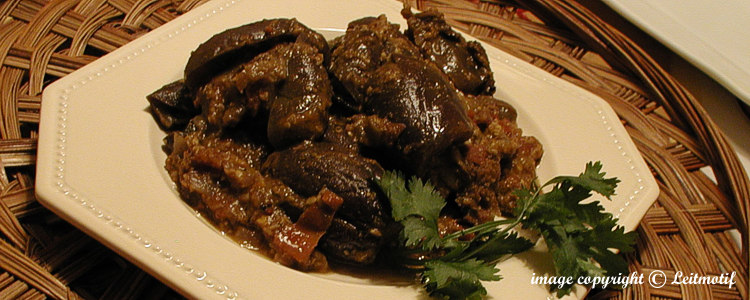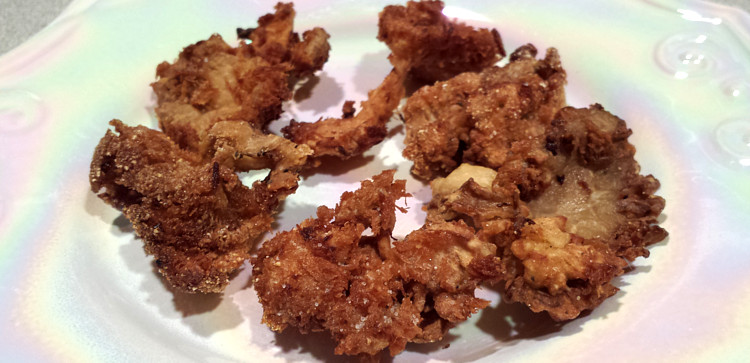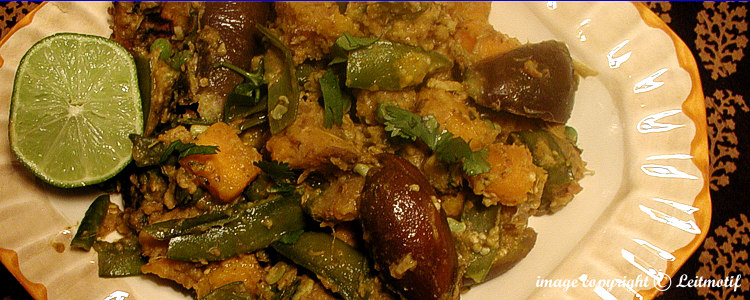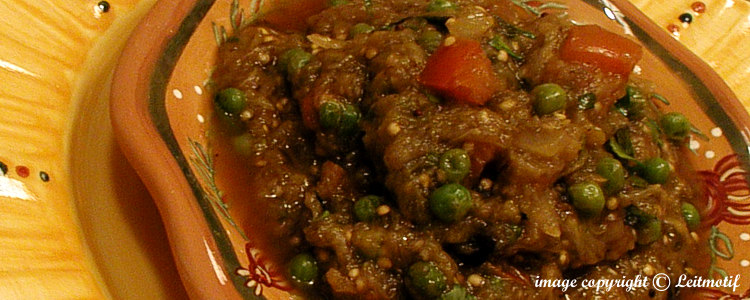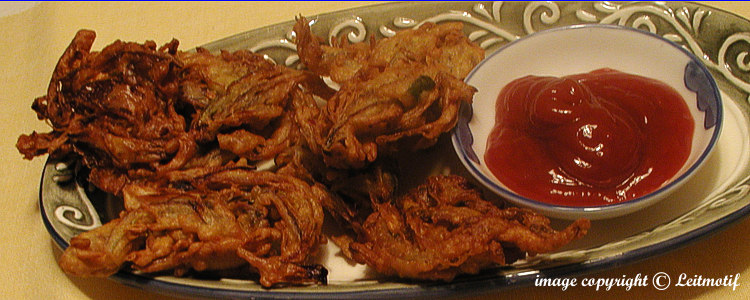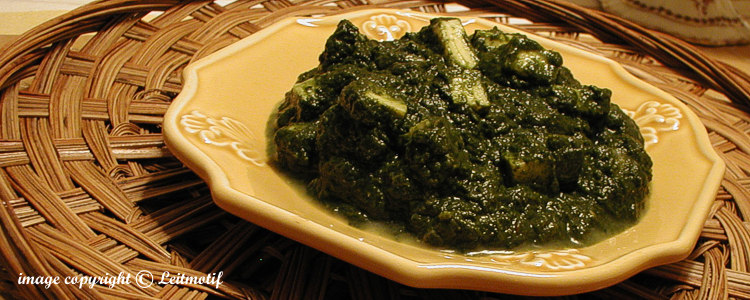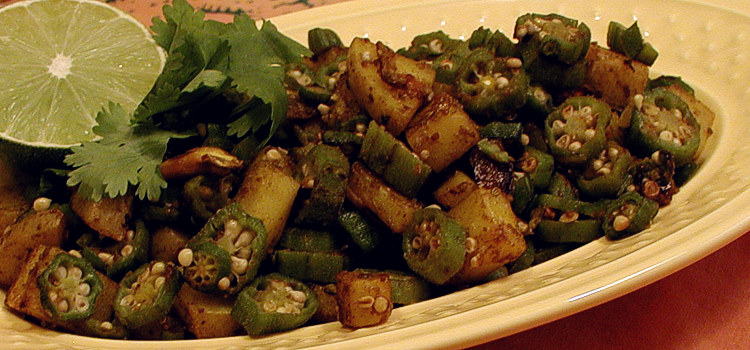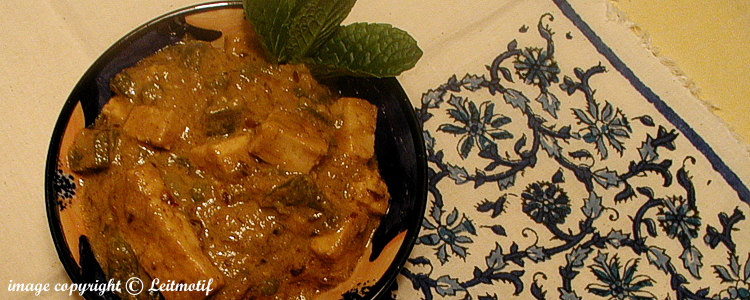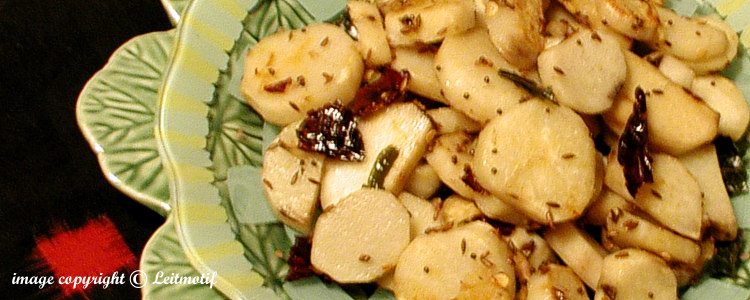Vangi is the Maharashtrian name for eggplant or brinjal, or baingan as it is known in Hindi). This is a Maharashtrian recipe that uses a spiced paste to stuff the vegetables. Use the shiny, oval, deep purple Indian eggplant for this dish. You can also use the striped variety. And as Mum says, the thornier the stem, the tastier the eggplant!
Vegetables
Vegetarian recipes
Veg Fried Clams (Fried Oyster Mushrooms)
I tasted these mock clams at a vegan restaurant and loved them! The next day, I experimented cooking up a batch of oyster mushrooms and was delighted with the way the ‘clams’ turned out! The coating was airy and crisp, and there was a pleasant crunch to it. The texture of the mushroom inside was almost similar to clam strips
Undhiyun ~ Indian Winter Vegetables Gujarati Style
This is one of my favourite ways to eat vegetables. Undhiyun is usually made in the winter season in India, and originates in Saurashtra (Southern Gujarat), using a unique combination of fresh winter vegetables. This Indian state has two streams of cuisine – Kathiawar and Surat schools. Surati preparations tend to be sweeter, due to the addition of jaggery or sugar.
Baingan Bharta ~ Roasted Indian Eggplant
All you eggplant haters – do try this recipe – you’ll never look at it the same way after you’ve tasted it prepared like this! Also called ‘bharit’ in Maharastra (Bombay is the capital of this Indian state), this is a wonderful recipe that uses a large eggplant. You need to roast it over a charcoal or stove fire, or in the oven. Pray, do not microwave, boil or steam the eggplant! I have seen some recipes that call you to do that which is unfortunate, because the essential flavour of this dish is derived from the ‘charring’ process.
Crispy Savoury Pakoras
This Indian version of tempura is a favorite street food and snack. While fillings may vary, the ingredient for the batter stays the same – besan, or chickpea flour. Chickpea flour is also used as a thickener and a flavoring. Pakoras can be made several hours in advance. They taste best freshly made of course, but if you make them ahead of time, heat them in the oven until they get crisp, since the crunch is a huge part of the taste. Serve with tamarind-date chutney, mint chutney or ketchup.
Saag Paneer ~ Creamed Spinach with Indian Farmers Cheese
Also know as Palak Paneer, this is another popular and well-loved North Indian preparation using creamed spinach and Indian farmer’s cheese. You can substitute paneer with firm tofu – cut tofu into squares, dust lightly with flour and fry lightly. And I have cooked this with a mix of seasonal greens – chard and tender kale, beet and mustard greens. My preference is to keep the spinach in the recipe, and not eliminate it altogether, as it adds a touch of creaminess to the dish. Although tomato is not traditionally used, if there is one in the refrigerator that begs to be of service, I will. Kinda adds a tangy sweetness to it – like a #4 on a major scale if you know what what I mean. And yes, it’s okay to use oil instead of ghee or butter.
Bhindi Masala Fry ~ Spiced Okra
Okra is a very popular vegetable in India and and the full flavor of this semi-dry dish can be savoured when eaten with lighter Indian breads such as chappatis or rotis.
Paneer Makhanwala
North India enjoys more pastoral land than the South and has a tradition of dairy farming. The abundance of milk has influenced the cuisine of Punjab and its neighbouring states with milk products such as yoghurt, butter and the fresh cheese paneer are used frequently. This popular dish is also known as Paneer Makahani or Butter Paneer.
Taro ~ Arbi Fry
Arbi or taro root is a starchy vegetable of South East Asian origin – its leaves are large and dark green, and my favourite way to consume them is in the form of patra, a Parsi preparation. Taro is different from the tree-like yucca, whose root is used widely in Carribean and South American cuisine.

